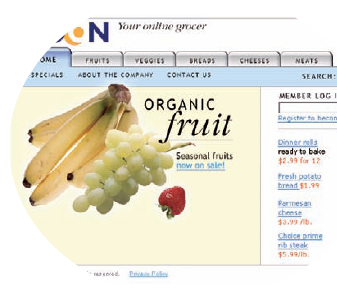Chapter 7. Web Graphic Design 101
In This Chapter
Understanding page layout strategy
Creating comps
Establishing visual priority
Combining color, text, and graphics
Using a grid layout system
Developing design guidelines for text and graphics
The principles of balanced layout and use of text and graphics apply to designing Web sites just as they do in media such as print and video, but a different set of constraints exists. In the Web design world, you have to think small and efficient, readable and interactive. Plus, all sorts of pesky technical things can get in the way of your creativity.
If you're not a graphic designer, this chapter is really for you. I discuss basic graphic design principles of how to blend color, text, and images into a pleasing Web user interface that people don't mind coming back to. If you're a designer already, this chapter covers some familiar design territory, but also shows how it all applies to Web site design.

Crafting the Visual Interface
The visual design of each Web page should accomplish two things: Make the page look professional and, more importantly, show people how to navigate around the site. These are big responsibilities for a humble graphic interface. As I discuss in Chapter 5, the way you design buttons — even text links — and where you place them can make or break a Web page.
Warning
If visitors can't find your site navigation elements because nothing ...
Get Web Design For Dummies®, 2nd Edition now with the O’Reilly learning platform.
O’Reilly members experience books, live events, courses curated by job role, and more from O’Reilly and nearly 200 top publishers.

